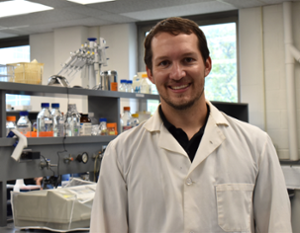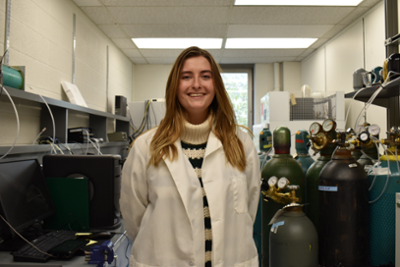Photon to plate: How increasing the photosynthetic efficiency of potatoes could lead to a greener future
Improving the photosynthetic power-plants in crops could mean using less fossil fuel derived energy supplements in crop cultivation and lead to a second Green Revolution according to a new life-cycle assessment (LCA) from the Walker lab at the Michigan State University-Department of Energy (MSU-DOE) Plant Research Laboratory (PRL), finds.
Laboratory Technician Heather Roney and Berkley Walker, assistant professor in the MSU Department of Plant Biology in the College of Natural Science and PRL faculty member, created an LCA looking at the amount of energy used to create fresh-cut French fries from the cultivation of the crop to when the fries are served–from photon to plate. The study was recently published in the journal Food and Energy Security.
Plants do not use all the solar energy that hits their leaves. A very small fraction of this energy ends up as the food we eat, as much of it is consumed by various inefficiencies in photosynthesis. While the photosynthetic inefficiencies have long been considered inevitable, recently proposed bioengineering strategies offer hope that more solar energy can end up making the food we eat.
Fixing photosynthetic shortcomings in plants could mean less human-derived supplements will be needed to grow the crops we rely on. As of now, a massive amount of anthropogenic energy supplements is used in agriculture in the form of fertilizers, machinery, transportation, and more. In 2014, two percent of energy consumption in the United States is directly related to agriculture.
The LCA suggests that yield could be increased by changing processes within the plant, instead of relying on external resources.
“These types of studies are important for putting our research directions in context,” Berkley explained. “We have to understand what the relevance of our research is to the current pressing needs of society.”
The researchers focused on three main questions:
- How much solar energy is consumed by the plant through photosynthetic and physiological processes?
- How does this energy amount compare to the amount of supplemental energy added by humans?
- How might improving photosynthesis within the crops decrease the amount of supplemental energy needed and increase crop sustainability?
To answer these questions, the researchers calculated and collected data on every major energy input and output needed to grow, transport, and cook French fries and compared it to photosynthetic efficiencies of the same crop. This helped determine what the major inefficiencies were and areas that could be improved.

“This is the first time researchers have combined plant physiology with human inputs into agriculture in quite this way,” Berkley said. “The results help quantify by how much improving photosynthetic efficiency would increase the sustainability of a sample food system – a vital consideration as we try to grow more food with lower ecological impact.”
The study found that about 80 times more energy is dissipated by plants during photosynthesis than humans expend cultivating, shipping, and preparing French fries. Human-made energy supplements such as fertilizers are often derived from fossil fuels and contribute a substantial amount to the energy input of this system. This life-cycle assessment proposes that, if photosynthetic inefficiencies are reduced within the plant, less supplemental energy from fertilizers would be needed, decreasing the total energy used in the system.
They calculated that if bioengineering strategies are used to improve the efficiency of photosynthesis, a five to 50 percent increase in energy efficiency could be seen. Strategies could include “turbo-charging” photosynthesis with a carbon concentrating pump or optimizing wasteful biochemical processes.
Theoretically, with these improvements in place, the same number of crops could be produced using less supplemental energy, including fossil fuel energy, or more crops could be produced while spending the same amount of energy used now.

“Looking to the future, I believe it is important to understand energy entering and exiting systems, for example agriculture,” Roney said. “Agriculture will always be a crucial field, and climate change will pose unique challenges we have to address. The theoretical improvements to photosynthesis proposed in this publication are key to a second green revolution where more energy from the sun is incorporated in farming while using less fossil fuels.”
This work was funded by the U.S. Department of Energy, Office of Basic Energy Sciences Office of Biological and Environmental Research and the Great Lakes Bioenergy Research Center.
Banner image: Laboratory Technician Heather Roney and Berkley Walker, assistant professor in the MSU Department of Plant Biology in the College of Natural Science and PRL faculty member, created a life-cycle assessment looking at the amount of energy used to create fresh-cut French fries from the cultivation of the crop to when the fries are served–from photon to plate. The study was recently published in the journal Food and Energy Security.